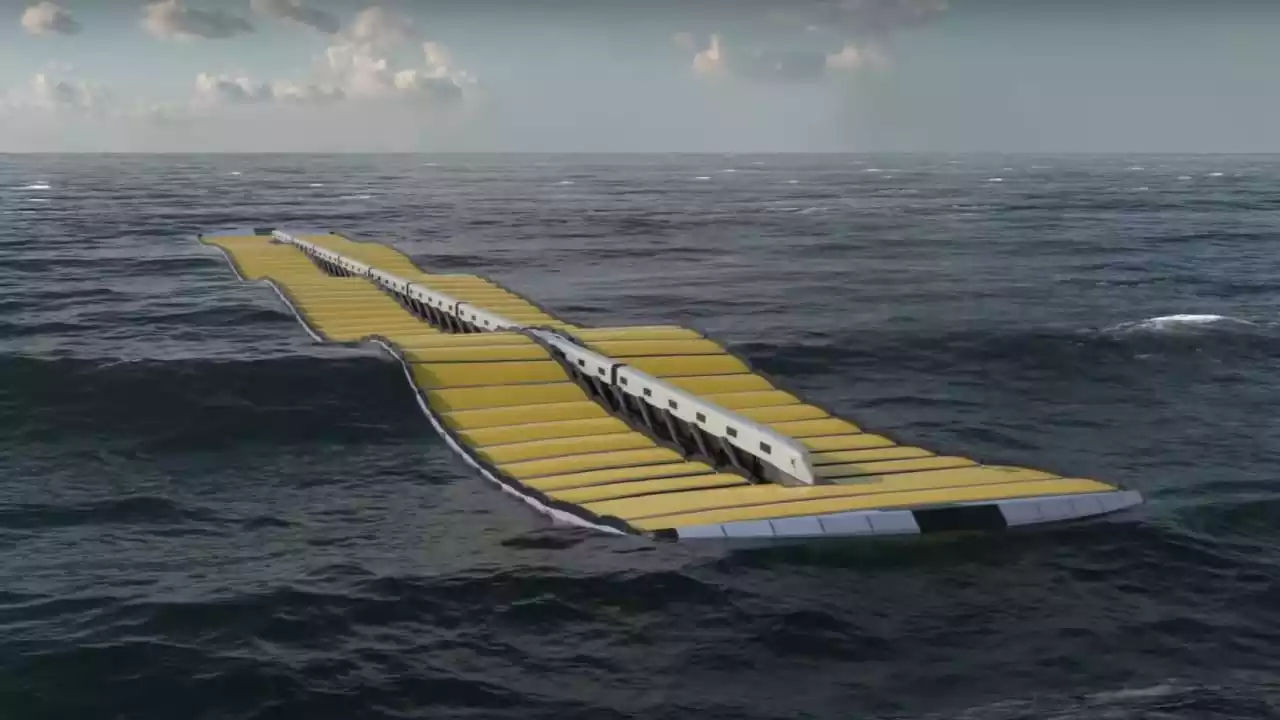Introduction
All of us have stood in awe at the beach, mesmerized by the vastness of the ocean and the rhythmic dance of its waves. We've felt the cool breeze caress our faces and listened to the symphony of crashing waves.In those moments, we've experienced the undeniable beauty of the ocean.

But what if there was more to this enchanting spectacle? What if, beyond its captivating facade, the ocean held within its depths an untapped wellspring of limitless energy? This is the realm of wave energy—a hidden treasure that beckons us to explore its depths and unlock its transformative power.
Wave energy, also known as ocean wave power, holds the promise of a clean, renewable, and abundant source of electricity. The relentless motion of waves, driven by the Earth's natural forces, provides an extraordinary opportunity to tap into this vast energy reservoir. By converting the mechanical motion of waves into usable electrical power, we can unlock a new era of sustainable energy production.

Unlike traditional energy sources such as coal or natural gas, wave energy offers numerous advantages. Waves are ever-present, offering a consistent and predictable source of power. They are also emissions-free, helping to reduce greenhouse gas emissions and mitigate the impacts of climate change. Furthermore, wave energy projects have the potential to create local job opportunities, stimulate economic growth, and enhance energy security.Let us now explore ,how the relentless motion of waves can be harnessed to revolutionize the energy sector.
UNLEASHING THE POWER OF THE WAVES
The process of how wave energy works involves a series of intricate steps that bring together engineering, physics, and environmental considerations. Firstly, specialized devices are strategically positioned in the ocean to capture the energy from waves. These devices, such as floating buoys, oscillating water columns, or submerged structures, are designed to withstand the forces of waves while efficiently capturing their energy.As waves pass by these wave energy devices, they induce mechanical motion.

The specific mechanism of energy conversion depends on the type of device used. For example, floating buoys rise and fall with the waves, driving hydraulic systems that generate electricity. Oscillating water columns utilize the movement of air trapped inside a chamber, which is pushed by the waves, driving turbines to produce power. Submerged structures, on the other hand, may use the pressure fluctuations caused by wave motion to drive turbines directly.
The mechanical motion obtained from the waves is then converted into electricity using generators. These generators utilize electromagnetic induction, where the mechanical motion is used to rotate a magnetic field within coils of wire, producing an electric current. The generators are connected to power take-off systems that transfer the electrical energy to the electrical grid or to local applications.

In some wave energy systems, energy storage technologies such as batteries or compressed air systems are incorporated. These storage systems allow for the smooth distribution of electricity, ensuring a consistent power supply even during periods of low wave activity. The generated electricity can be transmitted through underwater cables to coastal communities or integrated into existing power grids.
Conclusion
Delving into the world of wave energy reveals a remarkable opportunity to harness the power of ocean waves and transform it into clean, renewable electricity. The captivating process of wave energy conversion, from wave capture to power generation, showcases the ingenuity and potential of this innovative technology.Next time we stand on the shores and witness the rhythmic dance of waves, let us envision a world where the mighty ocean becomes a boundless source of clean energy, propelling us towards a brighter and more sustainable tomorrow
Read more
We hope this blog post has sparked your curiosity, just as the nodes on the screen come alive when touched. Stay tuned for more exciting content next week!

 Vaishnavi B
Vaishnavi B
